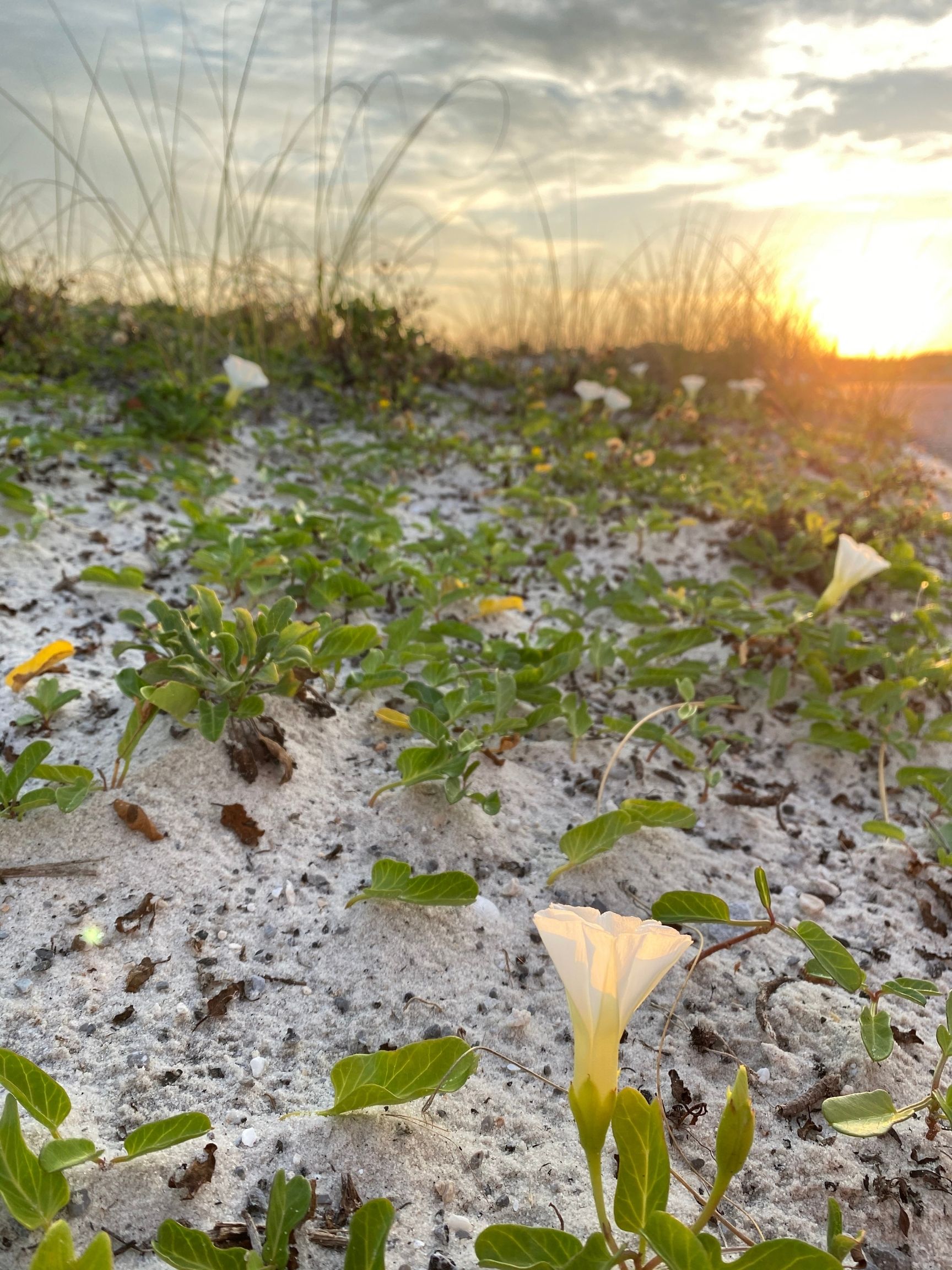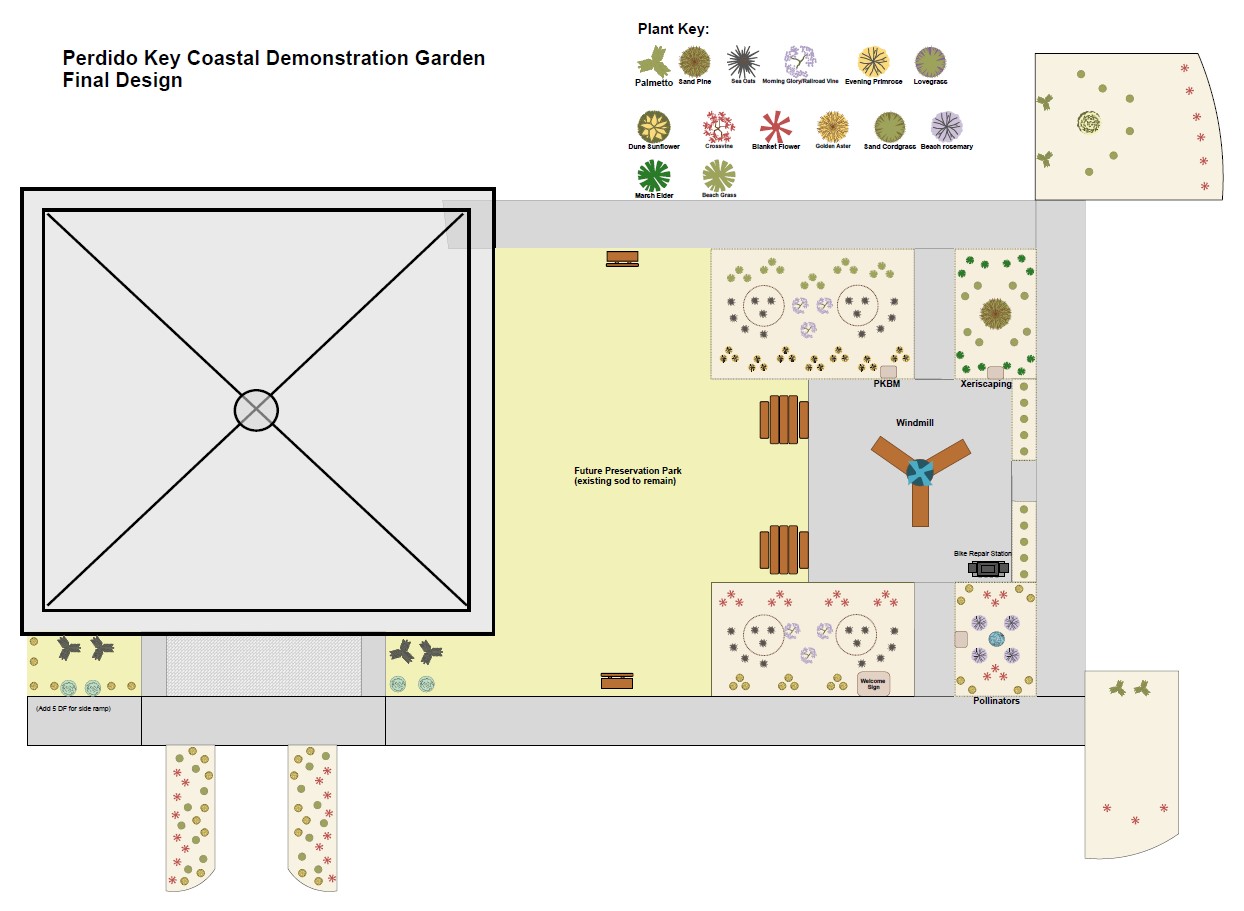

Barrier islands and coastal landscapes can present many unique challenges to maintaining a thriving garden if you don’t know the keys to success. Water can be a scarce resource, and sandy soils have limited organic matter and drain quickly. Coastal environments are subject to high levels of salt that can damage both the exterior and interior of many plants. If that wasn’t enough, plants are also subjected to our intense summer sun and high heat.

Samantha Bolduc, Escambia County Natural Resources Management’s project lead for the Perdido Key Coastal Demonstration Garden, took all these factors into effect when planning the demonstration garden.
“All of these factors mean non-native plans have a hard time surviving on barrier islands without constant attention and care. Our native plants are already adapted to the coastal ecosystem and can often be found already growing on coastal properties. These plants provide food and shelter for native wildlife, require minimal maintenance, and help connect habitats across coastal ecosystems. Using native plants means less money and time spent maintaining your landscaping and more time enjoying it! By supporting native plants and native communities, we ensure more resilient coastal ecosystems, which help protect us during hurricanes and other storms and provide habitat for a wide array of native wildlife.”
Perdido Key has a Habitat Conservation Plan (HCP) in place that helps balance the need for habitat conservation with human activities and development. The programs and policies contained in the HCP ensure any activities carried out are done so in a way that protects beach mice, sea turtles, shorebirds and the habitats they rely on. Properties that receive an Authorization of Coverage or “Beach Mouse Permit” must use approved native species in all landscaping and do so in a way that benefits wildlife and our coastal habitats.
For Perdido Key property owners, especially newcomers, these plants may not be the first plants that come to mind when picturing a garden. The demonstration garden will show homeowners that it is possible to meet the HCP requirements and have a beautiful, thriving garden. Species like saw palmetto, sea oats, morning glory, beach rosemary, and dune sunflowers, thrive in our coastal environment and can add sensory elements to your garden like texture, color, and scent.

The Estuary Program was thrilled to support the Perdido Key Coastal Demonstration Garden with funding through our Community Grant Program. The garden will serve as a resource that benefits homeowners, wildlife, and our waters.
The public is encouraged to visit and volunteer at the demonstration garden once it is completed to better understand the type of native plants that are best suited for barrier island environments and how best to take care of them.
“To plant a garden is to believe in tomorrow”- Audrey Hepburn
On January 29th, Escambia County Natural Resources Management held a volunteer workday to prepare the future site of the Perdido Key Coastal Demonstration Garden at the Perdido Key Visitor Center. Estuary program staff joined a group of dedicated community members that included Troop 626 and the Perdido Key Association. The workday provided some much need TLC to existing plants and removed plants that had either perished or did not meet HCP requirements.


Despite the blustery weather (or perhaps because of it!) volunteers got to work quickly upon arrival. Loppers, shovels, and rakes were distributed amongst the group and volunteers charged with tackling different sections of the landscaping. There was a flurry of activity as volunteers thinned out overgrown saw palmettos and grasses, dug out dead plants, wrangled invasive Japanese climbing fern, and toted wheelbarrows full of yard waste to the street for pickup.
Troop 626 scouts were excited to earn their Conservation Badges as they helped to dig out plants, rake and sweep up plant debris, and fill wheelbarrows to the brim. They day may have been cold, but Estuary Program staff left the workday with warm hearts after seeing the young environmental stewards give back to our environment.